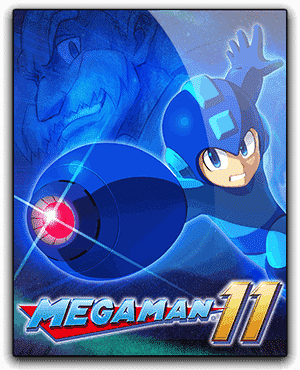

The game does a great job of introducing a gimmick, enemy, or hazard in an isolated environment before mixing them all in some true gauntlets that test your skills later in the game. Level design was excellent most of the time. Going up really thin openings was also a pain, and Bounce Man’s stage, while easy, was a bit annoying to get through because I would occasionally bounce off a wall or corner it didn’t seem like I had hit.

The only small problem I had with gameplay, which could also be coupled with my presentation issues, is that the hit detection on some walls or objects in tight spaces could feel a bit off. Mega Man feels as good and responsive as ever to control, showing that Capcom hasn’t lost their touch with gameplay even after an extended hiatus. From the start, Mega Man can jump, shoot, slide, and Call Rush, with various other small upgrades to be purchased during the adventure.

That isn’t to say gameplay feels unfamiliar. Mega Man 11 doesn’t have that problem, mainly due to the new double gear system. Even though Mega Man 9 and Mega Man 10 were fun in their own right, one could definitely argue that those games tended to feel like more of Mega Man 2, not true continuations of the series.
#VORPX MEGA MAN 11 SERIES#
Wahwee” or “we must wecover all the energy immediately w-Mega Man.”Īs I’ve mentioned a few times throughout the review, Mega Man 11 tries to iterate and build upon the series with interesting new level gimmicks and mechanics. Voice acting is also good all around for the basic dialogue they are given. Graphics are one place Mega Man 11 doesn’t get caught up in trying to be a retro-imitation outside of a few classic movements, which is appropriated in the era of pixel art games that Mega Man 9 and 10 helped kick off.

The design of returning characters is sleek and recognizable, while the new enemy and robot master designs are memorable. Considering that Mega Man 9 and 10 opted to go with the same graphical style of the NES games, Mega Man 11 took a risk going for something more akin to a 3D version of Mega Man 7 or 8, and it paid off. Outside of the aliasing issue mentioned above, the game otherwise has a very colorful and nice-looking art style. “The design of returning characters is sleek and recognizable, while the new enemy and robot master designs are memorable.” The soundtrack is also bit unmemorable, considering the series’ pedigree in this department. I’m not saying it needs a story on the level of the Mega Man X series, but a little more polish and fleshing out would’ve been nice. While some of this could be attributed to the game going for a “retro feeling,” I’d rather Capcom put more effort into this part of the game. In-game models also had a bit of notable aliasing in Switch handheld mode as well, which took me out of some of the cutscenes as well as some gameplay segments. For the eleventh entry in such as famous series, this really stands out. For a series that has had more impressive cutscenes (for the time they were released in at least) in the past, the presentation of these struck me as surprisingly budget title feeling and not too dissimilar to how Mighty No. There are no fully animated cutscenes, only static in-game models or more detailed drawings with dialogue on top of them. These presentation flaws are the most prominent sore spot for me throughout the entire game. That being said, I’m not very impressed with how Mega Man 11 presented cutscenes throughout the game. Putting the story’s roots so far back in the Mega Man timeline is a good way for Mega Man 11 to establish its story within the series canon and a necessary continuation, which helped motivate me beyond my pre-release hype. Light gives Mega Man the same ability so he can go and stop them. Wily returns, brainwashes a new set of robot masters, and gives them the Double Gear to up their powers, so Dr. “Mega Man 11 still provides the satisfying and well-designed platforming that put Capcom on the map in the 80s.”ĭr.


 0 kommentar(er)
0 kommentar(er)
